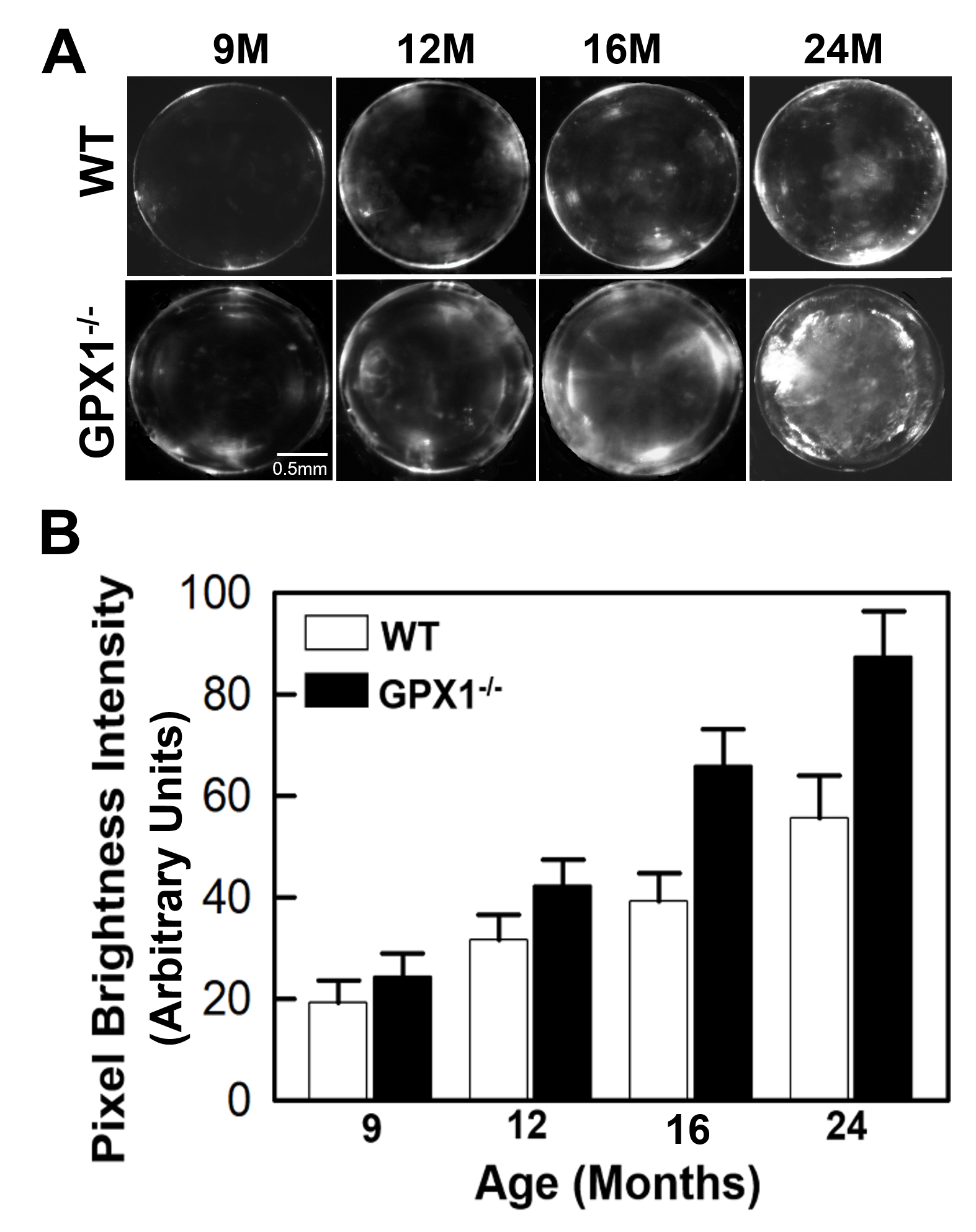Figure 3. Lens transparency as a function of age. A: Dark-field images comparing lens transparency in WT and GPX1−/− mice at 9, 12, 16 and 24 months (M) of age. Lens refractive alterations as aberrations started around 9 months of age and
continued. As age progressed, loss of lens transparency increased and manifested as mature cataracts in GPX1−/−, signifying the role of GPX1 for lens transparency. The increase in the loss of lens transparency is statistically significant
compared to the age-related loss of lens transparency in the WT type. B: Quantification of pixel brightness intensity to assess lens transparency. The higher the pixel brightness intensity, the
lower would be the lens transparency. At each point, GPX1−/− mouse lenses showed a significant (p<0.01) increase in the severity of cataracts compared to WT lenses. Eight lenses were
used for each mouse model. Error bars represent standard deviations.

 Figure 3 of
Varadaraj, Mol Vis 2022; 28:11-20.
Figure 3 of
Varadaraj, Mol Vis 2022; 28:11-20.  Figure 3 of
Varadaraj, Mol Vis 2022; 28:11-20.
Figure 3 of
Varadaraj, Mol Vis 2022; 28:11-20. 